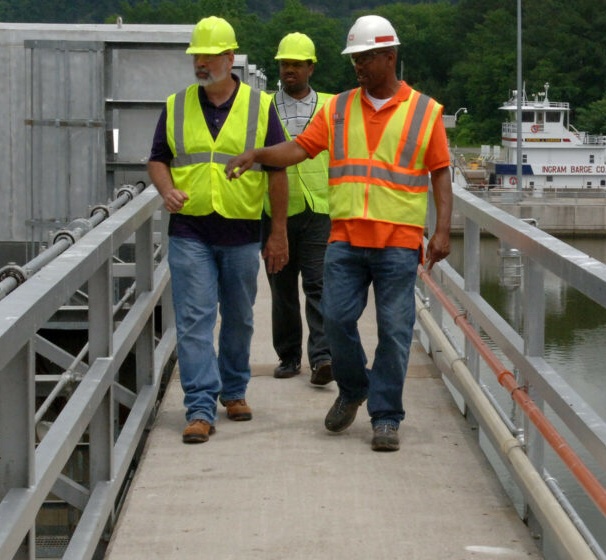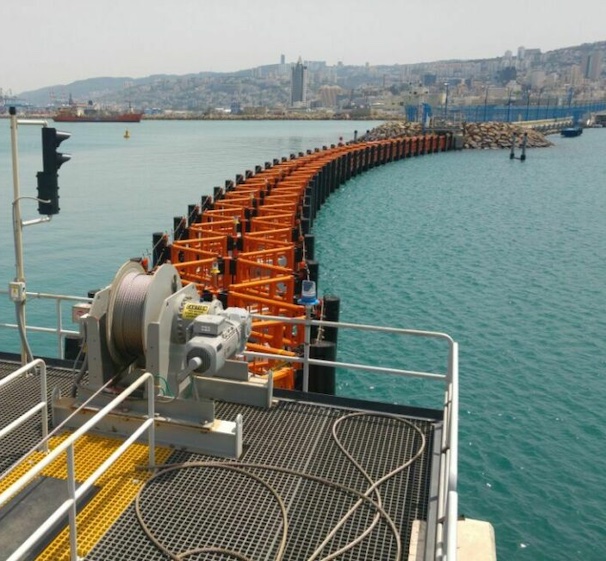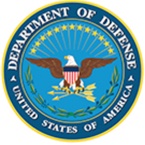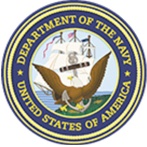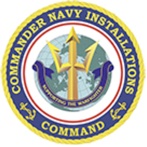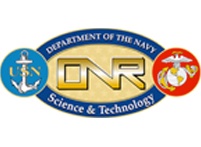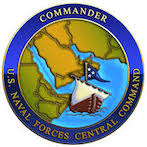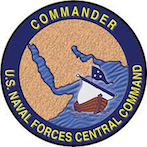September 25, 2014 – Marine Link
A look at commercial off-the-shelf technologies and products designed to mitigate risk at sea and in port.
In a post 9/11 world, many facets of maritime security only seem to grow. Global threats, despite best efforts, do not diminish. Chief among these issues are port security, the protection of critical energy assets and the scourge of piracy on the high seas. As the cost of meeting both challenges climbs, ship operators and port executives look to economically manage their risk. The effort weighs heavily on the bottom line at a time when many maritime sectors are struggling in the red. Nevertheless, ADM Jay Cohen (U.S Navy, Ret.), former Chief of Naval Research, told MarPro in July, “Life is risk versus cost.” As the man tasked with protecting U.S. Trident submarine assets in Georgia immediately following 9/11, Cohen ought to know.
In terms of today’s maritime security threats, managers are measuring the risk of losing the assets that make them money against the cost of providing adequate protection. The quandary is not unlike that which faced safety managers in the not-too-distant past. Eventually, the discussion of safety evolved from one which was viewed purely as a cost center to an effort where quality ship operators now understand that robust safety programs actually make money. Maritime security efforts, if they are headed in the same direction, arguably have not reached the same plateau. That hasn’t stopped the market from rolling out new equipment and technology to meet the growing global threat against maritime assets and infrastructure. In this issue of MarPro, a look at just a few of these innovations gives the waterfront new hope in the war on terror.
HALO MARITIME DEFENSE SYSTEMS
HALO Maritime Defense Systems markets a system designed to provide waterside protection of ports and harbors with maritime security barriers that are stable and effective. According to HALO, a majority of maritime security barriers in use today are inherently unstable, prone to flipping over in rough seas and provide limited security. Legacy maritime security barriers, most dating back to the period immediately following 9/11 when the emerging threat to ports was only becoming evident, are commonly referred to as ‘Type I’ barriers. HALO’s new system offers a breakthrough design, termed Type II Maritime Security Barriers, to overcome those deficiencies.
The world of port security changed forever on October 12, 2000 with the attack on the USS Cole. That incident clearly demonstrated that the threat from a determined terrorist in a small boat was both real and very difficult to defend against. The rush to deploy an adequate solution eventually saw the U.S. Navy procuring inflatable boat barriers. This ‘Type 1’ equipment provided some protection, but with them came a raft of other issues, including inferior stopping power, instability in rough seas and sometimes high maintenance costs.
Today, the U.S. Navy is looking for a better mousetrap. Beyond that market, however, the world’s 440 nuclear plants – all situated on or nearby water – need protection, as well. The growing LNG market, which will necessitate the proliferation of both import and export marine facilities here and abroad, has its own vulnerability problem. Looking past the USS Cole, the Mumbai attacks certainly disproved the theory that the commercial waterfront is secure.
A typical scenario for waterside security for just two miles of waterfront can involve five boats, 24/7 surveillance and all of that providing only an 80 percent probability of interdiction. HALO President Brendan Gray asks, “How do you identify the threat in the adjacent or next door marina?” He adds, “Today, landside asset security is excellent. In and on the water; not so much.” But, he cautions, “It is a mistake to consider security an overhead cost. One day of profits would pay for multiple barriers. And, because HALO barriers reduce manpower costs and need for boats, that lets you focus the security workforce where they are most needed.”
HALO’s Type II barriers are a catamaran, double wall barrier, designed to stop an attacking boat upon impact and thus deny access to the port. According to ADM Jay Cohen, Chairman of HALO, Type II barriers stop boats upon impact, less than 10 meters, withstand harsh ocean conditions and heavy sea states, stop different types of attacks, including swimmers, divers, and small boats and can additionally support additional security assets such as sensors, Radar and cameras. Using advanced commercial off-the-shelf extruded pipes and maritime grade ropes, the barriers require minimum maintenance in the marine environment. The equipment can also be fitted so as to provide optional blast and ballistic protection.
Unlike Type I barriers, HALO’s Type II barriers stops an intruding vessel on impact by transferring the kinetic energy of the force into the water mass that is trapped between the walls. The anchoring system, unlike with the Type I barrier, is used for station keeping only and not for stopping power. As a result, the Type II barrier has uniform strength and stopping power across the length of the barrier. It does not matter where the attacking vessel strikes; the stopping power is the same.
The port security barrier units that Jay Cohen helped develop in 2001 are still in use 13 years later. While sequestration has presented challenges in getting suitable replacements, the answer may finally be at hand. And, while the low hanging fruit and immediate need seems to be rooted in high risk naval bases and assets, the greater market probably resides in the commercial sector. That’s because the HALO system is collapsible, can be deployed remotely or via winch operation from either side. The wide, easily movable gate accommodates large commercial vessels with considerable beam.
Incorporated in January of 2008, HALO today has grown to 50 full-time employees. The HALO system is currently in the last phase of validation (at the Aberdeen Proving Ground) and is in full production. A half scale model is available to facilitate the “mobile” needs of events such as a G8 summit. With their first sale already finalized to a foreign government at a strategic base in Mediterranean Sea, that first installation will be completed by year’s end. The HALO barrier will also be demonstrated to senior Naval leadership in San Diego in January.
The next generation barrier by HALO already has earned nine patents and has four pending. ADM Cohen, as the Chairman of HALO, obviously has skin in the game at this point. But, he also represents the leading edge of research in this area, dating back to his days at the Office of Naval Research. Of HALO, he says simply, “It represents the biggest major breakthrough in this arena since 9/11.”
MARINE ARMOR SYSTEM’S ANTI-PIRACY
With the “Golden Age of Piracy” of the 1650s to 1730s now resigned to the history books, and a sharp decline in the number of attacks in today’s previous hotspot area of Somalia does this indicate piracy is a waning issue? Not according to the IMB Piracy Reporting Centre whose 2014 “Live Piracy and Armed Robbery” report details 67 incidents this year already. Indeed, the piracy “industry” is an industry so lucrative for the criminals involved that it in fact shows no sign of waning, just moving location. Clearly piracy still poses a very real threat and the need to protect vessels passively is a priority for ship owners and operators.
One answer is to hire armed security guards. And while it is true that no merchant vessel has yet been taken when armed security is on board, the use of contract guards can create its own headaches. In some areas, the transit of weapons is expressly prohibited, and when that doesn’t present a problem, certainly, glaring errors and tragedies have occurred. Despite increased regulation and standardization of this rapidly expanding service sector, some owners, flag states and ports are reluctant to introduce guards to the equation.
For operators who eschew the use of armed guards, Marine Armor System manufactures, supplies and installs passive solutions against maritime piracy around the world, providing ballistic protection to the crew. MAS is a non-lethalvessel protection system based on ballistic blinds, protecting vessels and rigs against pirate attacks and other potential threats such as armed robbery, terrorism and acts of sabotage. The system is fully patented and includes anti pirate blockades, bunkers and armored citadels or safe rooms onboard, protecting crew with a bulletproof barrier in case of pirate boarding, in line with IMO recommendations published in BMP4.
MAS is tailor-made to suit each individual vessel’s requirements, allowing for a quick and neat installation on board. Prior to installation, MAS technicians work together with the ship’s security officers to complete a risk assessment of each vessel to determine what level of protection is best for each area and then submit a report with a security hardening proposal, considering itinerary, schedule, threat level and other existing self-protection measures on the ship.
Manufacturing and pre-assembly takes place in the MAS factory based in the Canary Islands; a location purposely chosen due to its vicinity to the Puerto de la Luz base where ships make technical stopovers on their way through the Atlantic. Installation timings vary, dependent on the size of the vessel or rig, level of protection and the scope of work; as an example, it takes approximately one week to protect the bridge only. Installation can take place anywhere worldwide and does not interfere with the ship’s normal activities. MAS also offer fitting during the construction of new builds, with a current project ongoing for the creation of citadels on four supply vessels in Malaysia.
Considering what many companies operating in the commercial shipping and oil industries spend on protection with private security companies, MAS might be considered a cost-effective, long-term solution. As opposed to other protection methods, MAS requires little maintenance and works without crew involvement. Only one man is required to secure the whole vessel or platform.
The installation of MAS prevents pirates from being able to take control of the bridge onboard a vessel and is also suitable for the creation of citadels to protect crew. In case of pirate boarding, MAS allows private security officers to focus on saving lives and not in securing access/windows.
Designed to suit the ship’s interior, when in use MAS does not reduce visibility and is easy to maintain. When not in use the system requires no storage and remains hidden. MAS is currently being used on several ships and oil rigs operating in East and West Africa, with ongoing projects in Singapore, Malaysia and Indonesia. Anti-piracy solutions today aren’t necessarily “one size fits all,” but the MAS system provides a viable alternative to those firms whose business models and routing prevent the use of armed guards.
JEPPESEN FIGHTS PIRACY – INTELLIGENTLY
While global piracy is constantly changing, modern technology adapts to exploit the weaknesses in the pirates’ mode of operation. Intelligence gained from such technologies enables voyage planners and navigators to steer clear of harm – but what kind of information is required? While the image of the Somalian pirate is still high in the public’s mind as the number one piracy threat, the reality is not as straightforward.
Pirates have had to change their tactics in the last few years, with a geographical expansion to the oil-rich Gulf of Guinea, including the waters off Nigeria, Ivory Coast, Ghana, Benin, Togo, Cameroon and Lagos. However, pirates are not shy of extending their roaming to Angola and Congo and seizing opportunities arising from political instability in Syria, Egypt and Libya. Beyond these areas, from India and Indonesia to Peru and the Philippines, piracy is still a threat. Many platforms and small vessels used for crew transfer remain unprotected and can be easy prey.
While piracy has evolved, so too have its countermeasures. In addition to armed guards and navy protection, which are still an effective deterrent, e-Navigation solutions can provide valuable information to help seafarers avoid an encounter.
Jeppesen’s PiracyUpdate is an electronic chart overlay for ECS and ECDIS that helps identify, understand and manage the risks associated with crime at sea. Based on intelligence from recognizedsources on global sea piracy, it is used by mariners, shipowners, insurers and several national navies to reduce the likelihood of attacks. As pirates rely on certain sea states to operate, weather information is an essential element of anti-piracy data. Jeppesen OceanView is a marine planning software combining navigational charts, weather information and automatic route planning to create a more comprehensive picture for decision support in high risk areas.
Jeppesen also recognizes that too much data can bring along complications in the shape of information overload. Feedback from the PiracyUpdate and OceanView customers helped Jeppesen to optimize and streamline the voyage planning process within free-to-use NauticalManager software, which aggregates both weather and piracy data into a lean and user-friendly interface.
Today, with a tool like Jeppesen NauticalManager, ship’s staff can incorporate daily piracy activity notices with up-to-date weather information. In OceanView, “alarm limits” for weather conditions (wave height, for example) can be set. This would reduce the time required to create a complete voyage plan from two days down to 20 minutes, and adapting to new circumstances would take minutes instead of hours. The integration of electronic nautical charts with information such as weather and piracy and e-Navigation software yields significant benefits for the mariner. It not only optimizes voyage safety and fuel efficiency, but also streamlines the entire voyage planning process.
OceanView in conjunction with PiracyUpdate has widely been used to identify high-risk areas and obtain up-to-date information on the latest piracy activity. This includes keeping track ofhijacked ships and the involvement of pirate mother ships. During a hijacking of a Greek oil tanker off the Ivory Coast, Jeppesen’s partner Bergen Risk Solutions (BRS) used a digital anti-piracy tool to provide vital insight to lawyers, insurers, the owner, charterers and other parties involved.
In this case, a vessel carrying fourteen hijackers armed with AK-47 assault rifles and knives approached the 73,400 deadweight ton oil tanker, which was in the process of carrying out two ship-to-ship transfers off Abidjan with 30,000 tons of gas oil on board. Before the second operation took place, the vessel displayed suspicious behavior, switching off all lights and sailing directly south without explanation. BRS used PiracyUpdate to compare this suspected hijacking with similar incidents and was able to inform the client as to what had happened, the risk to the crew, vessel and cargo, as well as on what was likely to happen next.
BRS was tasked to coordinate the logistics involved in preparing the eventual release of the hostages and the vessel. This usually includes helicopter transfer, possible medical evacuation, liaising with the protection and indemnity (P&I) insurance holder of the vessel and more. At this point, however, when and where the release would have taken place was unknown. BRS started plotting the tanker’s movement. Based on their experience and incident reports in OceanView, they soon realized the vessel was heading for a known piracy stronghold in Nigeria. This information was parsed among the parties involved in the rescue such as navies and rescue services so they could converge on the location of the hijacked tanker. When the pirates realized their plans had been compromised, they accepted to release the hostages and the vessel in exchange for amnesty. Technology, in this case, provided just one more “passive” method to combat piracy.
MARITIME SECURITY
ADM Jay Cohen insists, “The world isn’t getting any safer and nothing is foolproof,” adding quickly, “and the market is growing because we in the commercial world are moving offshore, moving deeper and putting offshore assets at risk.” He’s right about all of that. At the same time, the model for piracy has changed and shifted location(s) while the risk to port-based assets and infrastructure grows with the increasingly violent terror threat; here and abroad. Fortunately, the marketplace has responded in kind. As it does, the maritime sector evolves to meet the threat, mitigate the risk and embrace new technologies along the way.
As published in the 3Q 2014 edition of Maritime Professional – www.maritimeprofessional.com)
